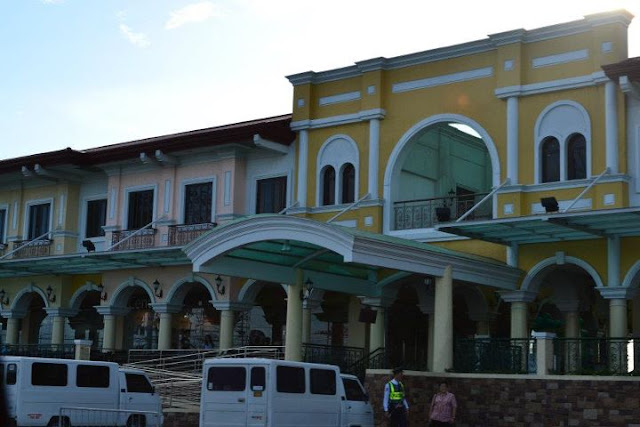Biyernes, Nobyembre 23, 2012
Molo Church – a “feminist” church
Women wanting to be empowered by the graces of women saints have a place in Molo Church. This Molo Church made of coral rocks (affixed with a mortar made from egg whites mixed with sand) earned the moniker “women’s church” because of the presence of 16 images of women saints inside. The centerpiece in the retablo is the image of Sta. Ana, the patron saint of Molo.
MIAGAO CHURCH (a UNESCO World Heritage Site in Iloilo)
it is a very NICE hotel :)
The Westown Hotel is located within Smallville, a popular dining and entertainment complex in Iloilo. Within walking distance from Westown Hotel is an excellent row of clubs, bars, restaurants, and coffee shops. MO2 Westown Hotel is the new face of modern paradise and exudes an elegant ambiance. This hotel came about with the idea of providing a comfortable and convenient place for visitors to stay with first class hotel rooms and amenities.
Huwebes, Nobyembre 22, 2012
BRIEF HISTORY OF ILOILO
Iloilo first appears in the Maragtas Legend of the ten Bornean datus who came to the island of Panay around the 11th or 12th century. The Maragtas, a set of ancient documents, is a popularly accepted chronicle of ancient Panay. According to the documents, Datu Puti and his fellow datus, together with their families, warriors and slaves, fled from the tyranny of Sultan Makatunao of Borneo, and landed at now known as the town of San Joaquin. At that time, Panay was inhabited by native aboriginal people, the small, dark-skinned "Atis" who were ruled by King Marikudo and Queen Maniwangtiwang . King Marikudo sold the lowlands of Panay for the price of a golden hat (saduk), a long golden necklace (manangyad) and other assorted items. After the sale, the Atis retreated to the highlands and newcomers settled in their new home. One datu, named Paiburong, was given the territory of Irong-Irong.
In 1566, as the Spanish conquest of the Philippines was underway and moving north toward Manila, the Spaniards under Miguel Lopez de Legazpi came to Panay and established a settlement in Ogtong (now Oton). He appointed Gonzalo Ronquillo as deputy encomiendero, or governor.
In 1581 Ronquillo moved the town center approximately 12km west due to recurrent raids by Moro pirates and Dutch and English privateers, and renamed the area La Villa de Arevalo in honor of his hometown in Ávila, Spain.
In 1700, due to ever-increasing raids, the Spaniards again moved their seat of power some 25km westward to the village of Irong-Irong, which had a natural and strategic defense against raids and where, at the mouth of the river that snakes through Panay, they built Fort San Pedro to better guard against the raids which were now the only threat to the Spaniards' hold on the islands. Irong-Irong or Ilong-Ilong was shortened to ""Iloilo"" and with its natural port quickly became the capital of the province.
Spanish control of Iloilo ended in November 6, 1898 after a garrison of Spaniards from Negros withdrew after the Americans defeat of the Spanish in the Spanish-American War.
Although long considered for centuries to be a city and major economic zone, by an act of the Philippine Senate, then under control as an American colony, Iloilo was given chartered status on August 25, 1937.
In 1566, as the Spanish conquest of the Philippines was underway and moving north toward Manila, the Spaniards under Miguel Lopez de Legazpi came to Panay and established a settlement in Ogtong (now Oton). He appointed Gonzalo Ronquillo as deputy encomiendero, or governor.
In 1581 Ronquillo moved the town center approximately 12km west due to recurrent raids by Moro pirates and Dutch and English privateers, and renamed the area La Villa de Arevalo in honor of his hometown in Ávila, Spain.
In 1700, due to ever-increasing raids, the Spaniards again moved their seat of power some 25km westward to the village of Irong-Irong, which had a natural and strategic defense against raids and where, at the mouth of the river that snakes through Panay, they built Fort San Pedro to better guard against the raids which were now the only threat to the Spaniards' hold on the islands. Irong-Irong or Ilong-Ilong was shortened to ""Iloilo"" and with its natural port quickly became the capital of the province.
Spanish control of Iloilo ended in November 6, 1898 after a garrison of Spaniards from Negros withdrew after the Americans defeat of the Spanish in the Spanish-American War.
Although long considered for centuries to be a city and major economic zone, by an act of the Philippine Senate, then under control as an American colony, Iloilo was given chartered status on August 25, 1937.
Mag-subscribe sa:
Mga Post (Atom)

















